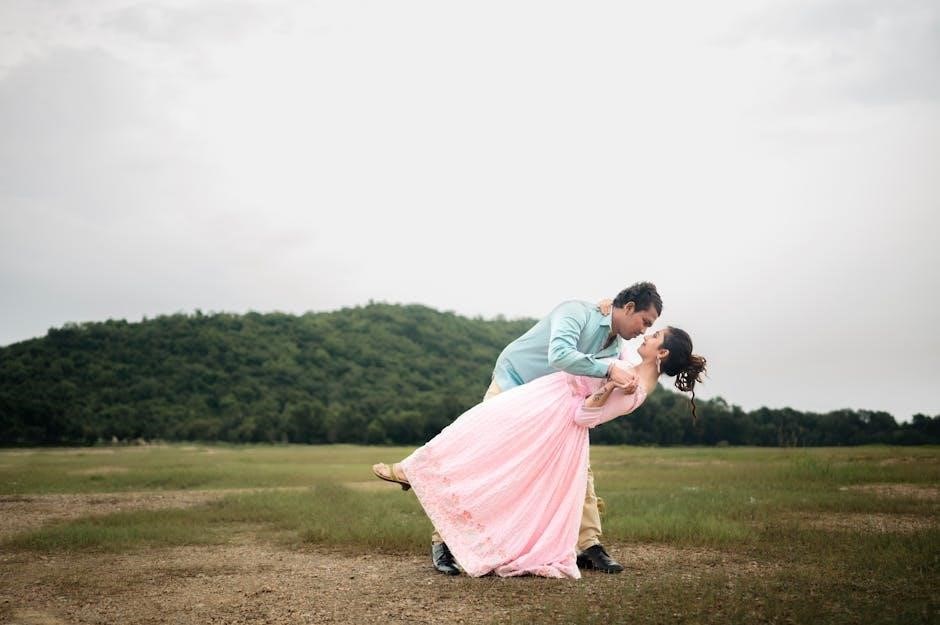In this captivating tale, ornithology meets romance as rival professors Dr. Beth Pickering and Professor Devon Lockley compete to find the elusive Deathwhistler bird in 19th-century England, blending adventure, historical charm, and a touch of magical fantasy with their blossoming love story.
What is Ornithology?
Ornithology is the scientific study of birds, encompassing their behavior, physiology, evolution, and distribution. Rooted in natural history, it combines biology, ecology, and conservation. In the 19th century, ornithology flourished as a gentlemanly pursuit, blending intellectual curiosity with outdoor exploration. For characters like Dr. Beth Pickering and Professor Devon Lockley, ornithology is not just a profession but a passion that drives their adventures. Their expertise in bird biology and taxonomy fuels their quest for the elusive Deathwhistler, a bird shrouded in mystery. Ornithology’s meticulous methods and observational rigor are central to their rivalry, as they navigate the challenges of tracking a rare and dangerous species. This discipline becomes the backdrop for their competitive yet romantic journey, intertwining science with storytelling.
The Connection Between Birdwatching and Love
Birdwatching, at its core, is a shared adventure that fosters connection and understanding between individuals. For Dr. Beth Pickering and Professor Devon Lockley, their rivalry in ornithology gradually evolves into a deeper bond. The thrill of the hunt for the Deathwhistler bird creates a sense of camaraderie, as they rely on each other’s expertise and passion; Their competitive nature is softened by moments of mutual respect and admiration, revealing a romantic undertone. The patience and dedication required in birdwatching mirror the nurturing of a relationship, where trust and communication are essential. Through their shared quest, they discover that love, like the elusive Deathwhistler, is a rare and beautiful find worth pursuing. Their story highlights how adventure and intellect can ignite romance in unexpected ways.
Meet the Ornithologists
Dr. Beth Pickering and Professor Devon Lockley are rival ornithologists competing to find the elusive Deathwhistler bird in 19th-century England, blending academic rivalry with adventure and discovery.
Dr. Beth Pickering: The Female Ornithologist
Dr. Beth Pickering is a determined and unconventional female ornithologist in 19th-century England, whose passion for birds and competitive spirit drive her to outshine her rivals. Her pursuit of the elusive Deathwhistler bird underscores her relentless dedication to her craft, blending scientific rigor with a touch of adventure. As a woman in a male-dominated field, Beth challenges societal norms, showcasing her intelligence and independence. Her rivalry with Professor Devon Lockley fuels her ambition, yet their shared quest for the Deathwhistler gradually reveals deeper layers to their relationship; Beth’s journey is not only about discovering a rare bird but also about asserting her place in a world where women’s contributions are often overlooked.
Professor Devon Lockley: The Rival Ornithologist
Professor Devon Lockley is a charismatic yet fiercely competitive ornithologist whose rivalry with Dr. Beth Pickering fuels the narrative. His sharp wit and confidence often clash with Beth’s more reserved nature, creating a dynamic tension. Devon’s pursuit of the Deathwhistler bird is as much about scientific discovery as it is about outdoing his rival. Despite his arrogance, Devon harbors a deep respect for Beth’s expertise, which gradually evolves into admiration. Their intellectual sparring and shared adventures reveal a complex interplay of ambition and attraction. Devon’s character embodies the blend of humor, intelligence, and vulnerability, making him a compelling counterpart to Beth in their quest for both the bird and love.
The Rivalry Between the Two Ornithologists
The rivalry between Dr. Beth Pickering and Professor Devon Lockley is a central driving force in their story. Both are brilliant ornithologists, but their competitive nature often leads to sharp, witty exchanges. Devon’s charm and confidence contrast with Beth’s more reserved, methodical approach, creating a dynamic tension. Their rivalry is not just about discovering the Deathwhistler but also about intellectual pride and personal validation. Despite their clashes, there is an underlying respect for each other’s expertise. Their constant one-upmanship gradually reveals deeper emotions, as their competitive relationship evolves into something more complex and intimate. The rivalry becomes a catalyst for both their professional and personal growth, blending adventure with romance.

The Magical Bird: Deathwhistler
The Deathwhistler, a rare and mysterious bird, captivates ornithologists with its enigmatic presence, blending magic and danger in a tale of adventure and discovery in 19th-century England.
What is the Deathwhistler?
The Deathwhistler is a rare, magical bird central to the story, possessing an enigmatic and dangerous allure. Its presence sparks intense rivalry between ornithologists Dr. Beth Pickering and Professor Devon Lockley, who are determined to uncover its secrets. This elusive creature embodies both beauty and peril, captivating hearts and imaginations in 19th-century England. Its magical traits and mysterious nature make it a pivotal element in the adventure, blending historical fantasy with romance. The Deathwhistler’s significance extends beyond ornithology, symbolizing the pursuit of the extraordinary and the unpredictable nature of love. Its dangerous charm drives the plot, intertwining professional ambition with personal passions in a tale of discovery and enchantment.
The Significance of the Deathwhistler in the Story

The Deathwhistler holds profound significance as the driving force behind the ornithologists’ adventure and the unfolding romance. This elusive, magical bird symbolizes the pursuit of the extraordinary and the unpredictable nature of love. Its presence ignites both rivalry and passion between Beth and Devon, pushing them to confront their ambitions and emotions. The Deathwhistler represents the intertwining of professional obsession and personal passion, as the characters’ quest for it mirrors their journey toward each other. Its dangerous allure adds tension, highlighting the risks and rewards of chasing the unknown. Ultimately, the Deathwhistler embodies the story’s central themes of discovery, love, and the thrill of the unattainable, making it a pivotal element in the narrative.
Why the Deathwhistler is Dangerous
The Deathwhistler’s magical nature and elusive presence make it perilous to pursue. Its enchanting song can lure hunters into treacherous territories, increasing the risk of accidents or encounters with unknown dangers; Additionally, the rivalry between Beth and Devon intensifies the pursuit, driving them to take bold, sometimes reckless actions. The bird’s rarity and beauty attract not only ornithologists but also other unsavory characters, adding layers of tension. Furthermore, the Deathwhistler’s magical traits may pose direct threats, such as defensive mechanisms that endanger those who approach it. These elements combine to create a high-stakes adventure where the pursuit of the Deathwhistler tests both their resolve and their safety, heightening the story’s suspense and adventure.

Historical Context
Set in 19th-century England, the story blends Victorian-era cultural norms with adventurous pursuits, highlighting the societal dynamics and the rising interest in ornithology during that period.
Setting: England in the 1800s
The story unfolds in the picturesque yet socially rigid landscape of 19th-century England, where Victorian-era customs and scientific curiosity intertwine. The ornithologists’ adventures take place in 1890, a time when the rise of scientific exploration and the allure of the natural world captivated society. The setting is rich with historical detail, blending the charm of English countryside estates and bustling academic circles with the thrill of discovery. The Deathwhistler bird, a magical and elusive creature, adds a layer of fantasy to this historical backdrop, creating a unique blend of realism and enchantment. The era’s societal norms and intellectual pursuits provide the perfect stage for the rivalry and romance between the two ornithologists, Dr. Beth Pickering and Professor Devon Lockley.
Ornithology in the 19th Century
During the 19th century, ornithology flourished as a scientific discipline, driven by exploration and the Victorian era’s fascination with natural history. Ornithologists like Dr. Beth Pickering and Professor Devon Lockley were part of a community passionate about bird classification, behavior, and habitat studies. The period saw the rise of detailed field guides and the establishment of ornithological societies, fostering a sense of camaraderie and competition among enthusiasts. Tools were rudimentary, relying on observations, sketches, and specimen collections. This era laid the groundwork for modern ornithology, blending scientific rigor with a deep appreciation for avian beauty. The pursuit of rare species, like the Deathwhistler, became a symbol of both intellectual curiosity and adventure, reflecting the spirit of discovery that defined the time.
Social Dynamics of the Time
In 19th-century England, societal norms were deeply rooted in class distinctions and gender roles. The upper class enjoyed privileges like leisure and education, while the lower class faced labor and limited opportunities. Women, though gaining traction in academia, often faced societal skepticism, as seen with Dr. Beth Pickering’s journey in ornithology. The era’s rigid social expectations influenced relationships, with marriage and reputation holding significant weight. The rivalry between Beth and Devon Lockley reflects not only professional competition but also the societal pressures of their time. The story subtly critiques these dynamics, blending historical accuracy with a touch of parody. This setting provides a rich backdrop for their adventures, highlighting how societal norms shaped both their pursuits and their personal connections.
Romantic Elements
The rivalry between Beth and Devon evolves into a tender romance, blending intellectual sparring with emotional depth. Love blossoms amidst their adventurous pursuit of the Deathwhistler, adding warmth to their competitive journey.
The Love Story Between Beth and Devon
Dr. Beth Pickering and Professor Devon Lockley’s relationship begins as a fierce rivalry, driven by their shared obsession with the Deathwhistler. Their intellectual sparring and competitive nature mask a deeper attraction, which gradually surfaces as they navigate the challenges of their pursuit. Beth’s determination and wit captivate Devon, while his charm and expertise draw her in. Their love story unfolds against the backdrop of 19th-century England, blending adventure, humor, and emotional depth; The Deathwhistler’s elusive presence becomes a metaphor for their own fragile connection, as they learn to balance their ambition with their growing feelings for each other. Their journey is a testament to how love can flourish even in the most unexpected, competitive circumstances.
How the Hunt for the Bird Influences Their Relationship
The pursuit of the Deathwhistler bird becomes a catalyst for the evolving relationship between Beth and Devon. Their shared obsession with the elusive creature forces them to collaborate, despite their rivalry, fostering moments of mutual respect and admiration. The thrill of the hunt creates tension, but also brings them closer, revealing vulnerabilities and hidden emotions. As they navigate the challenges of their quest, their competitive banter gradually gives way to a deeper connection. The bird’s enigmatic presence serves as a constant reminder of the risks and rewards of their partnership, both in their professional and personal lives. The adventure becomes a metaphor for their relationship, where trust and understanding must be earned.
The Role of Love in the Adventure
Love becomes an unexpected yet pivotal force in the ornithologists’ adventure, adding depth to their quest for the Deathwhistler. As Beth and Devon navigate their rivalry, their growing feelings for each other create a tender counterpoint to the dangers of their mission. Love complicates their decisions, revealing vulnerabilities beneath their professional exteriors. The pursuit of the bird becomes a metaphor for their emotional journey, where trust and understanding are tested. Their relationship evolves from competitive banter to shared moments of vulnerability, highlighting how love can thrive even in the midst of adventure. Ultimately, love shapes their motivations and the outcome of their journey, proving that the greatest discovery may not be the bird, but each other.

Themes and Tone
This charming historical-fantasy rom-com blends parody, sharp wordplay, and Indiana Jones-like adventures with British manners and tea, offering a witty, cheeky narrative that delights readers.
Parody and Historical Fantasy
The story masterfully blends parody with historical fantasy, creating a humorous yet enchanting narrative. Set in 19th-century England, it playfully reimagines the era with magical elements, such as the elusive Deathwhistler bird, while poking fun at traditional romantic and academic tropes. The rivalry between ornithologists adds a layer of absurdity, turning their competitive quest into a comedic adventure. The historical setting is richly detailed, yet the fantasy elements, like the dangerous yet captivating bird, elevate the tale into a whimsical realm. This unique mix of parody and fantasy creates a lighthearted, entertaining story that delights readers with its clever wordplay and cheeky narrative style, making it a standout blend of genres.

Sharp Wordplay and Narrative Awareness
The narrative is adorned with sharp wordplay and a self-aware tone, creating a charming and lighthearted atmosphere. Characters often engage in witty banter, adding depth to their interactions. The story acknowledges its fictional nature, with characters occasionally addressing the reader or commenting on the absurdity of their situations. This meta-awareness adds a layer of humor and cleverness, making the tale feel both intimate and playful. The dialogue is crisp and engaging, with exchanges that highlight the tension and chemistry between the protagonists. Overall, the sharp wordplay and narrative awareness elevate the story, blending humor and intellect seamlessly into the adventure, making it a delightful read for fans of clever, engaging storytelling.
Indiana Jones Vibes with Manners and Tea
The story captures the adventurous spirit of Indiana Jones, blending it with the charm of 19th-century England. The rivalry between ornithologists is infused with wit and elegance, as they navigate their quest with manners and tea. The Deathwhistler’s magical presence adds a thrilling layer to their pursuit, reminiscent of Jones’s perilous escapades. Yet, the tale remains distinctly British, with its refined dialogue and cultural nuances. This unique blend of action, humor, and historical detail creates a captivating narrative that feels both epic and intimate. The characters’ adventures are as much about uncovering the bird’s secrets as they are about navigating their own identities and relationships, all while maintaining a sense of propriety and charm.
The Ornithologists’ Field Guide to Love masterfully blends adventure, romance, and historical charm, offering a unique tale of rivalry and love set against the backdrop of 19th-century England.
Final Thoughts on Love and Ornithology
The Ornithologists’ Field Guide to Love weaves a charming tale of adventure, romance, and historical fantasy, set against the backdrop of 19th-century England. Dr. Beth Pickering and Professor Devon Lockley’s rivalry to find the elusive Deathwhistler bird becomes a metaphor for their evolving relationship, blending sharp wordplay and narrative awareness. The story captures the essence of ornithology’s passion and the unpredictability of love, showcasing how both pursuits require patience, dedication, and a touch of magic. With its unique blend of danger, humor, and tenderness, the novel reminds us that love, like the Deathwhistler, is a rare and captivating treasure worth chasing.
Lessons from the Ornithologists’ Journey
The ornithologists’ pursuit of the Deathwhistler reveals profound lessons about obsession, love, and self-discovery. Their rivalry highlights the dangers of letting ambition overshadow humanity, while their evolving relationship shows how love can transform even the most competitive of natures. The journey underscores the importance of balance—between science and emotion, solitude and partnership. Ultimately, the story teaches that true fulfillment lies not in the conquest of nature or knowledge, but in the connections we forge along the way. The Deathwhistler, though elusive, becomes a symbol of the rare and precious treasures life offers, reminding us to cherish both the hunt and the companions we share it with.


